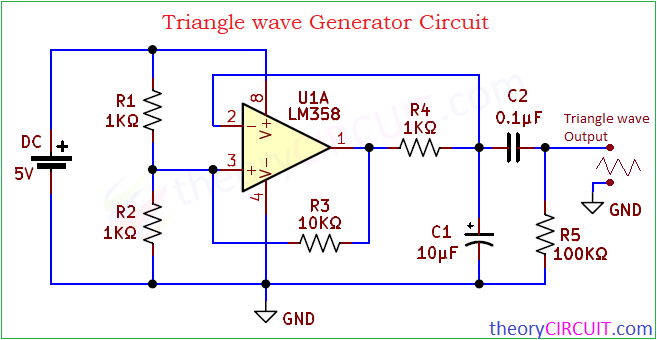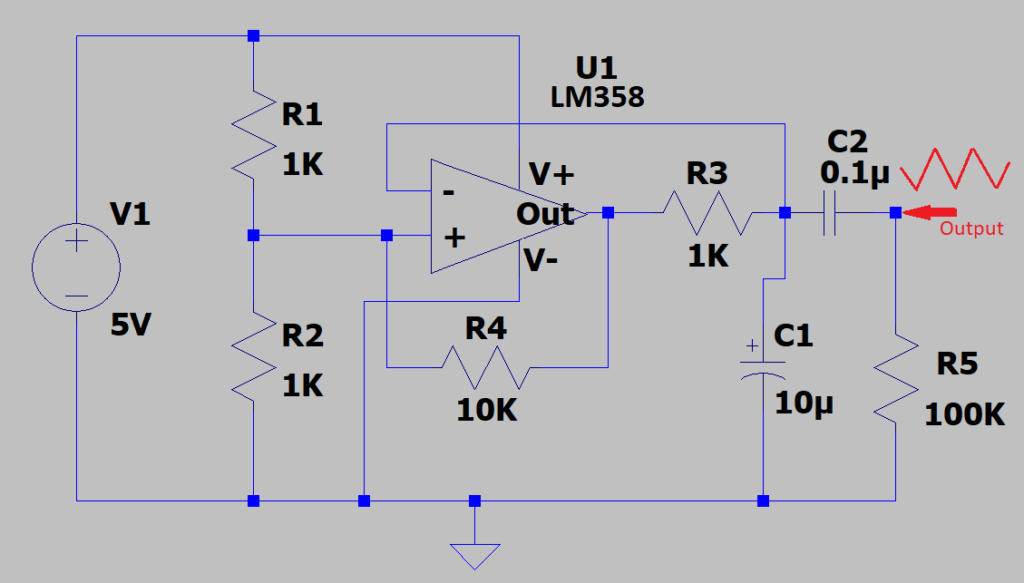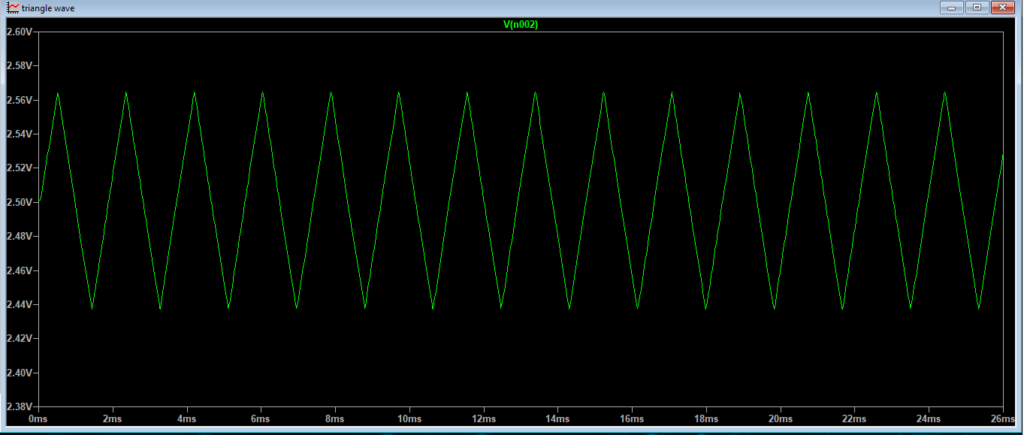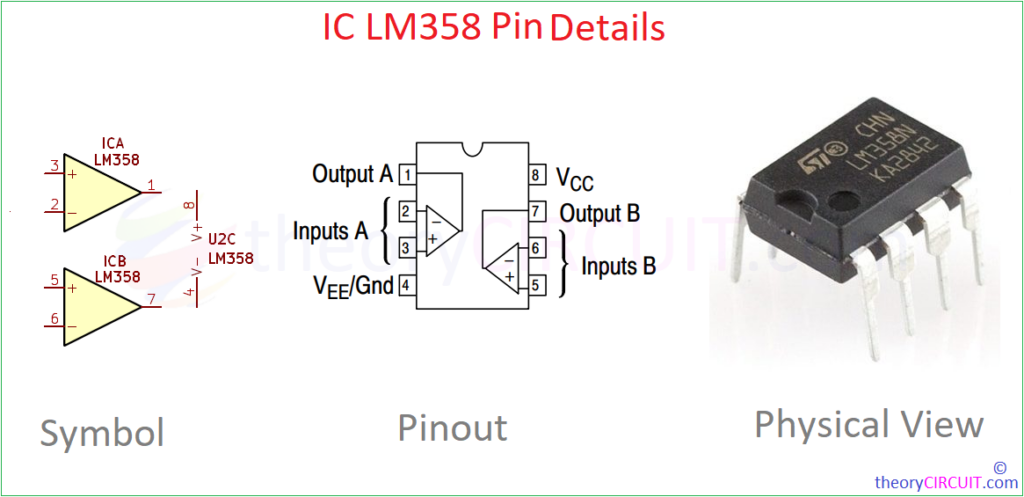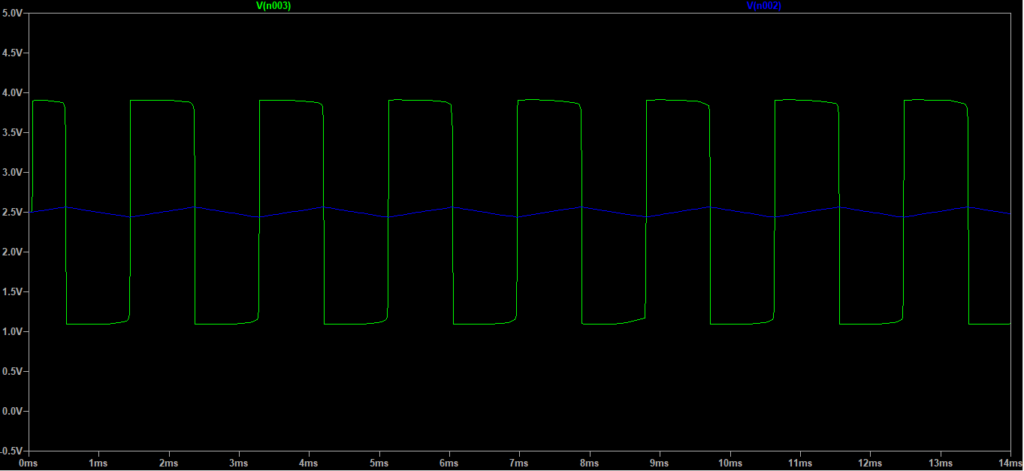Last Updated on June 15, 2024
A non-Sinusoidal waveform with linear rise and fall in the shape of Triangle from zero axis is called as Triangle waveform. This type of Waveform is being used in function generator for testing, troubleshooting, and used in signal processing modulation etc., Here we are going to design simple Triangle wave Generator Circuit using LM358 operational amplifier.
By connecting few external Resistor and Capacitor we can make LM358 to oscillate Triangle wave at constant frequency and by changing the value of feedback Resistor and capacitor we can change the output frequency.
Circuit Diagram
Components Required
- IC LM358
- Resistor 1KΩ = 3
- Resistor 10KΩ, 100KΩ = each one
- Capacitor 10μF, 0.1μF = each one
- DC supply 5V to 9V
Triangle wave Generator Simulation Circuit
Triangle wave Generator Simulation Output
IC LM358
Before jump into the operation of circuit, short note about IC LM358. It is a general purpose dual operational amplifier, It contains two independent high gain and internally frequency compensated Op-Amps. It comes in DIP 8, SOIC, and TSSOP packages. It can operate from 3V to 32V single supply and don’t requires dual power supply.
IC LM358 is suitable for low power supply waveform generation circuit.
Circuit Operation
Main element operational amplifier is configured in Integrator combined with Schmitt Trigger.
Here op-amp U1A from LM358 with Resistor R1, R2 and R3 forms a Schmitt trigger and it provides a stable square wave output by switching the output state when the input voltage crosses specific threshold voltage levels. The positive feedback via resistor R3 introduces hysteresis, ensuring that the op-amp switches cleanly between high and low states, producing a square wave.
Here the op-amp also acts as an integrator using the resistor R4 (1kΩ) and capacitor C1 (10µF) connected with inverting input. This integrator converts the square wave output from the Schmitt trigger from pin 1 before reaching the R4 Resistor, into a triangular waveform by integrating the input signal. The integration process results in a continuous ramp-up and ramp-down voltage at the output and creating the triangular wave.

